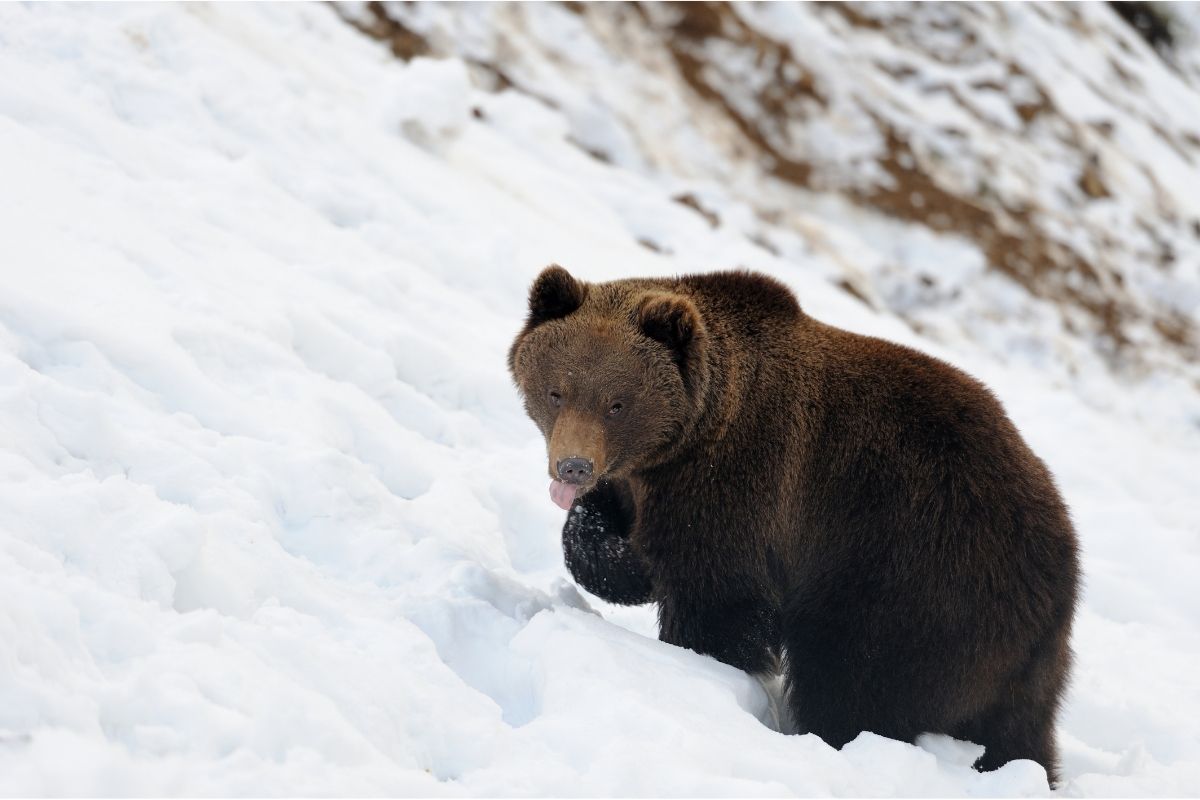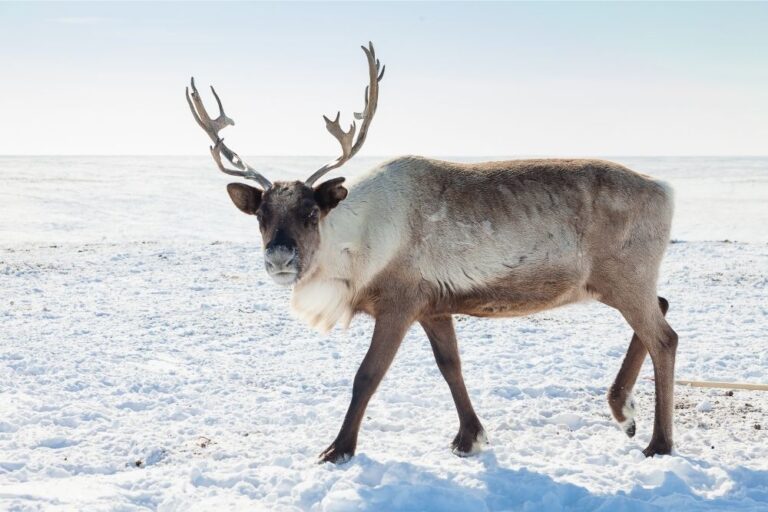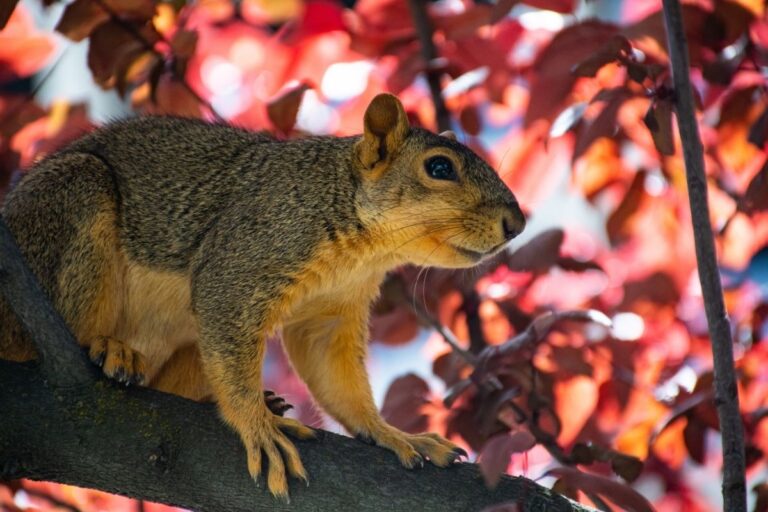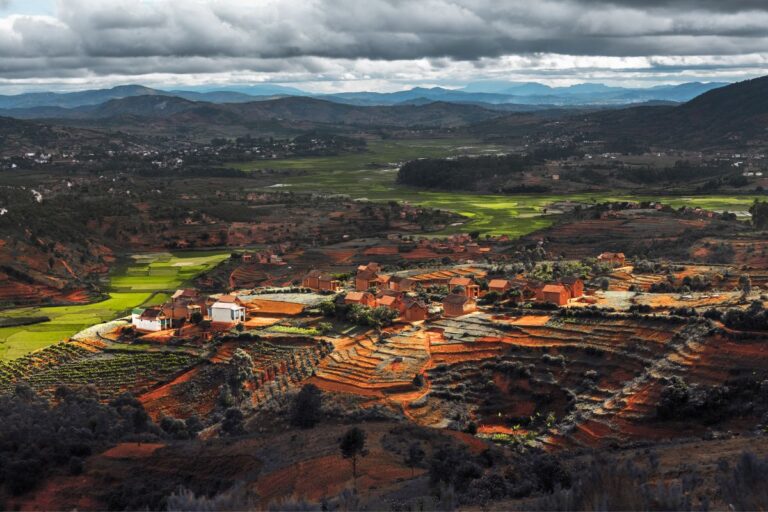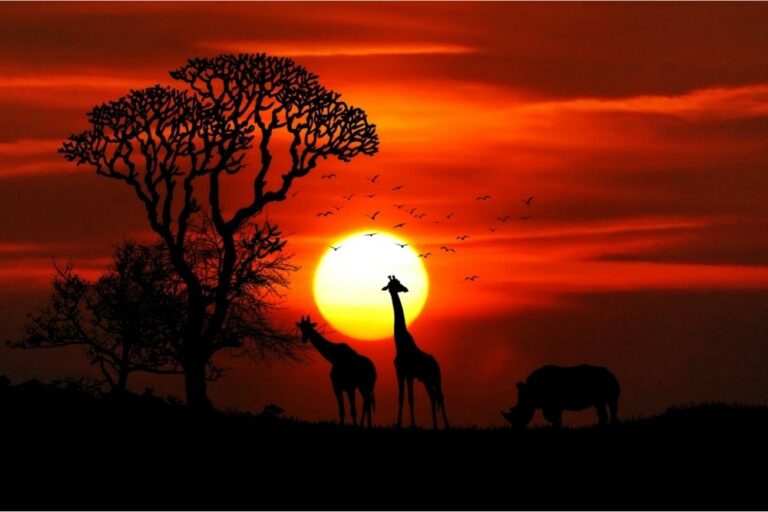Animals That Live In The Taiga
Last Updated on March 3, 2022 by
Taigas are the biggest land biome. They stretch across North America, Asia, and Europe. Taigas get between 15 and 30 inches a year of precipitation.
Summers are warm, but winters are very cold. Temperatures can reach the 70s during the summer, but they can drop down to -65 degrees F during the winter.
Taigas are often called coniferous or boreal forests. Coniferous forests are found at high altitudes, and boreal forests have trees with needles instead of leaves.
The taiga is also known as the tundra, which is covered by snow for most of the year. Weather conditions are known to fluctuate greatly, with temperatures changing rapidly at any given moment.
Around 29% of the world’s forests are within the taiga, and it is home to many different kinds of animals, which have had to adapt effectively to survive extreme temperatures, with many of them hibernating during the winter months.
Bearing all that in mind, you might be wondering about what kind of animals can survive living in these conditions?
After all, it’s a far cry from our homes! Well, stick with us, as we tell you about six amazing animals that live in the taiga.
Animals That Live In The Taiga
Let’s get straight into it! Now that we know a little more about the Taiga, here are six animals that can survive in these conditions.
1. American Black Bear
American black bears are very powerful animals. Their diet tends to consist of lots of plants, leaves, and twigs. They don’t eat much meat, but they do sometimes eat the leftovers of smaller animals.
They also hibernate in the winter and can run fast, up to speeds of 25 miles per hour. Their weight varies from 220 -600 pounds.
Bears mate during the summer and give birth to their offspring during winter. Male bears do not take care of their young, this is left to the female bears. Instead, they leave to mate again. The lifespan of black bears is about 25 years.
2. Bobcat
Bobcats are solitary animals living in remote areas of forests. They often hunt alone and eat plants and insects, as well as game animals such as rabbits, mice, and squirrels.
Their fur is brown or gray, and they change their coat colors in the winter and summer seasons. Bobcats are adorable but deadly creatures.
Their teeth are razor-sharp, which is useful for hunting prey. The cats also prefer to walk instead of running so that they can conserve energy.
Bobcats usually stay in their territory, but if a female gets pregnant, she might move into another territory.
3. Moose
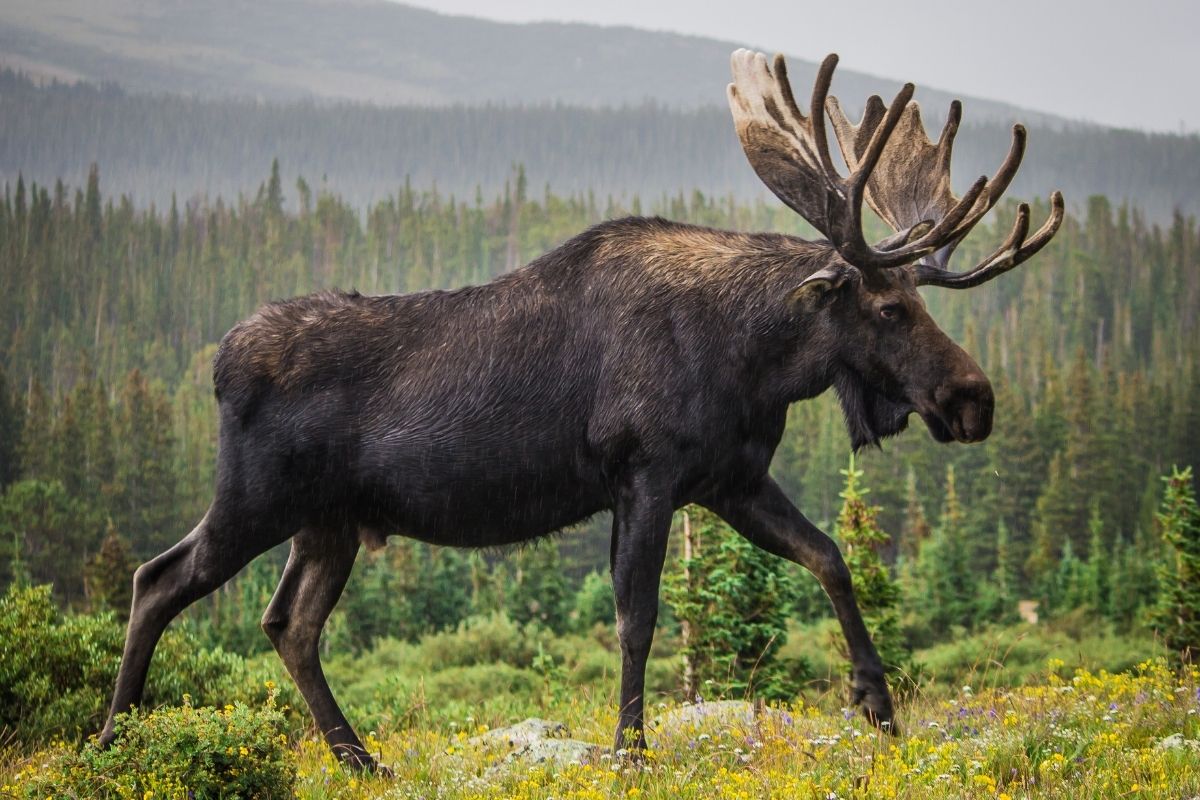
Moose are large animals that live in the coldest parts of the world. They have thick coats to protect them from the cold weather, and the males have large antlers.
The moose diet is plant-based and consists of grasses, sedges, and other plants. Moose are very tall and have long legs that allow them to move easily in the deep snow and browse higher shrubbery for food sources.
Moose are most likely to live near rivers and streams and among habitats that have a lot of willows as this is one of the main sources of their food. Moose don’t normally live longer than 16 years in the wild.
4. Canada Lynx
Lynxes are large cats that hunt small animals using stealth and speed. Their fur is very thick and keeps them warm during extreme weather.
The lynx has a long body, but short legs. Males are bigger than females, and they have a lot of muscle mass, with strong paws, which they use to dig into the ground to get food.
They’re usually nocturnal and make great swimmers and climbers which makes them adept and dangerous predators.
Usually, lynxes are solitary hunters that don’t have much interaction with each other apart from the mother-offspring bond.
They mark their territories with urine and don’t tend to leave their home ranges often. The primary prey of the Canada lynx is the snowshoe hare, which counts for around 35-97% of their diet.
5. Red Fox
Red foxes are large predators that are very common throughout the world. They are known to be aggressive towards other animals and are also known to eat birds and small mammals such as rabbits and amphibians.
They have red and white fur, with long snouts and fluffy tails. They stand up to two feet tall and have a reputation for being smart and cunning.
Red foxes usually mate during the winter months and have exceptional hearing which allows them to hear very low-frequency sounds such as nearby rodent noises, which serves them well for hunting their prey.
6. Otters
Otters are semi-aquatic mammals that are native to the northern hemisphere. They weigh between 5-14kg.
They have waterproof coats, which allow them to swim freely. They mainly eat fish, but also some amphibians, snails, and clams, as well as small mammals and birds.
Otters have long, slender bodies and relatively short limbs compared to other mammals. Their most distinctive feature is the webbing on their feet.
Otters have a long tail which helps propel them when swimming or diving. Otters use this tail as a rudder to steer while they’re swimming.
Otters also have a thick coat of fur that protects them from the cold water. Otters’ coats trap air inside the fur, keeping them dry and warm. Otters are mammals who need to eat lots of food because they are very active and love to swim.
Conclusion
Taiga is the terrestrial biome that has the lowest average temperatures. It has a dry continental climate with mild winters and cool summers.
Animals that live in the taiga must have adaptations that allow them to survive the harsh temperatures that often come unannounced.
The taiga is teeming with fascinating creatures which have developed many features over history to help them deal with difficult conditions.
These adaptations, such as very thick furs and shelter-finding abilities have helped lots of different species to make the taiga their home.

